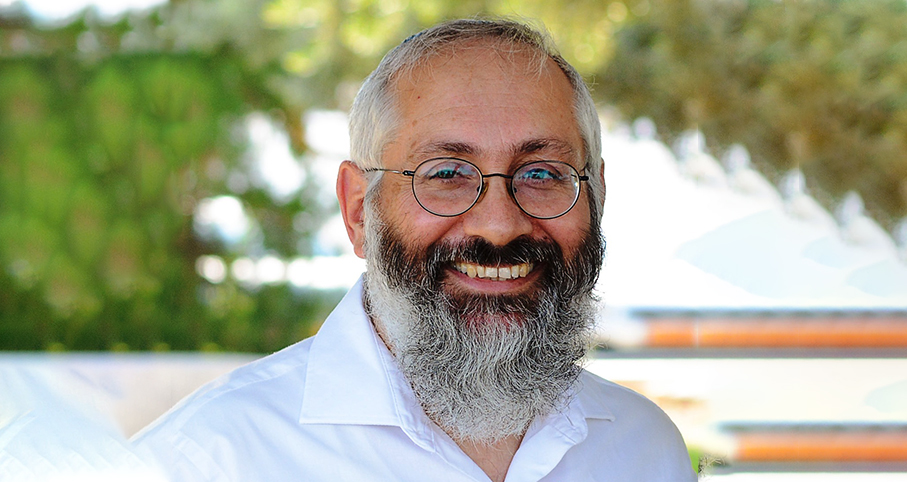Beit Midrash
- Sections
- Chemdat Yamim
- Bemare Habazak - Rabbis Questions
- Jewish Laws and Thoughts
- Jewish Laws and Customs
- Tzitzit & Tefillin
Upon visiting different shuls, from various elements of society, it pains me to see great numbers of fine Jews who are definitely donning their tefillin wrong and many others about whom it is hard to tell, especially when they have receding hairlines. Since even some talmidei chachamim get it wrong, I assume that knowing how to apply the halacha to one’s head is a big problem. We will focus here on tricks to figure this out.]
Question: How can one tell when his tefillin shel rosh needs adjustment?

Bemare Habazak - Rabbis Questions (627)
Rabbi Daniel Mann
191 - Taking Off Challa on Shabbat
192 - How to Tell When Your Tefillin Need Adjustment
193 - Leaving Eretz Yisrael for a Trip
Load More
Now, a little review of the anatomy of a normal human head. The skull is highest towards the back of the head; it then gradually slopes down. Near the front of the head, the slope increases, and then turns into a "cliff" (i.e., the forehead). The hairline ends at the end of the gradual or the midst of the increased slope. No hair (except eyebrows) is rooted in the forehead.
Based on the above, the following are signs of misplaced tefillin. If the end of the tefillin looks like it is "hanging off a cliff," it is certainly much too far forward, as a line drawn down from the end of the tefillinwould hit the forehead or even the nose. Because of the increased slope, there may be a little space between the bottom of the tefillin and the head. However, if there is too much room (i.e., a finger fits in comfortably), it is very likely not in the right place.
Another sign is the tefillin’s angle. The angle is determined primarily by where the tefillin are fastened to the head by the straps – at the back of the tefillin. Generally, tefillin in the right place will be upright with a slight downward slant. If the tefillin has a serious downward-facing angle, it is generally (unless one has a rounder head than most) too far forward, so that its rear is where its forward part should be (on the steeper slope). Thus the tefillin’s front will be too far forward, unless the tefillin are very small.
A final sign is the kippa. With average size kippot and tefillin, there should be little or no room between the two. One with a particularly largekippa or who wears it on the top of the head (as opposed to part top/part back) will have to move the kippa back.
When I look around many of the shuls I regularly daven in or visit, I see many too many people with apparent (or definite) problems in this regard. Among the older generation, I would estimate that the problems are in well above 50% of the people. As I HATE correcting people (and most hate being corrected), I am torn as to when the rectifiable problem is clear enough to halachically/morally require me to do the uncomfortable. The following limud zechut decreases the problem. Most people put the tefillin at a certain position and push it forward in the process of fastening. Thus, some of those who keep the tefillin too far forward had it in the right place for a few moments after the beracha (so that it is not l’vatala) before the fastening was complete, and thereby may have fulfilled the mitzva for that short time.
More people should learn how to shorten the circumference of the head strap, which is necessary for the tefillin to stay in the right place. You are invited to visit me or ask a sofer. It may be easier to Google search: "youtube tefillin head adjust." Then, you can help yourself and your friends.

Ask the Rabbi: Beracha when Lighting for a Neighbor
Rabbi Daniel Mann | Kislev 5786

Ask the Rabbi: Drawer with Aluminum Foil Roll
Rabbi Daniel Mann | Cheshvan 5786

Ask the Rabbi: Kohen Who Has Trouble Standing
Rabbi Daniel Mann | Cheshvan 5786

Ask the Rabbi: Rubbing Cream on Someone who Accepted Shabbat
Rabbi Daniel Mann | Cheshvan 5786

Rabbi Daniel Mann

Calling a Kohen Who is a Katan
Av 22 5777

Washing Hands with Soap on Yom Kippur
Tishrei 4 5776

A Mourner Serving as Chatan Torah
5775






















